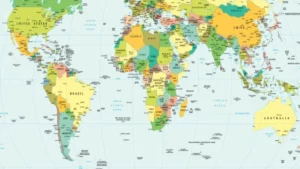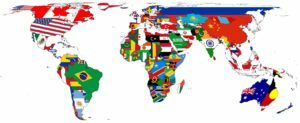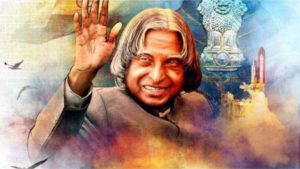Throughout history, many individuals have encountered discrimination. This refers to when someone receives a different treatment because of their ethnicity, skin color, gender, age, etc. Regrettably, it still occurs today! However, some incredible people have worked tirelessly to make a difference and help us advance towards a society where everyone is treated equitably. Nelson Mandela is one such individual. He worked tirelessly to abolish apartheid in South Africa, inspiring several more people to work towards a similar goal in other countries.
- Childhood and Early Life of Nelson Mandela
- What Action Did Nelson Mandela Take Against Discrimination and Apartheid?
- Why was Nelson Mandela Put in Prison?
- Nelson Mandala in Prison
- How Did The Work of Nelson Mandela Help in His Release?
- Nelson Mandela as the President of South Africa
- When did Nelson Mandela pass away?
- Final Thoughts
Childhood and Early Life of Nelson Mandela
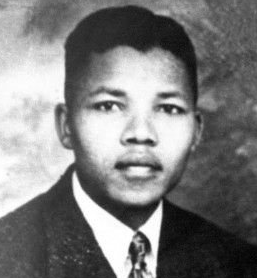
Nelson Mandela was born on July 18, 1918, in Mvezo, located in the Transkei region of South Africa. As a child, he was named Rolihlahla. But at the age of seven a teacher at school gave him the name ‘Nelson,’ and it stayed! He was born into a royal family. His father, Henry, was the leader of the Tembu tribe in South Africa, and his great-grandpa was the tribe’s monarch.
After completing his schooling, Nelson Mandela went on to study at the University of Fort Hare and the South African Native College. He subsequently relocated to Johannesburg to study law at the University of the Witwatersrand. He graduated as a lawyer in 1942, at the age of 24.
What Action Did Nelson Mandela Take Against Discrimination and Apartheid?
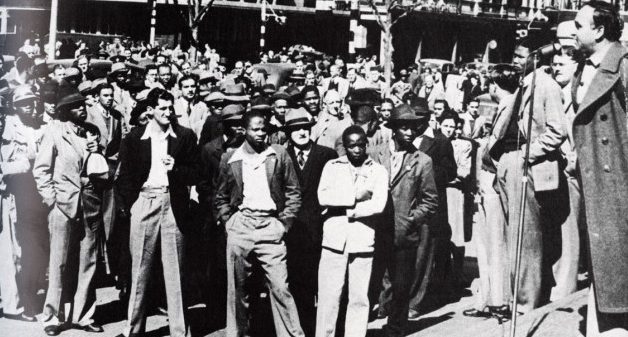
Mandela (second from right) of the ANC Youth League and Dr. Yusuf Dadoo of the Transvaal Indian Congress address a public forum on the steps of Johannesburg City Hall, 1945
As Nelson Mandela was growing up, racial bias greatly divided South Africa. White people ruled the country, so they had privileged lifestyles, with decent jobs, attractive homes, and access to good schools and healthcare. On the other hand, the majority of black people worked in low-wage jobs and lived in impoverished areas with inadequate infrastructure. This distinction between the two races became more severe after the introduction of ‘apartheid’ in 1948.
Mandela, like many others, believed that everyone, regardless of skin color, ought to be treated equally. As a result, he joined the African National Congress (ANC) in 1944, which was a political organization that advocated for equal rights for whites and blacks. He rose to prominence within the ANC and was instrumental in establishing and leading the ANC Youth League. Mandela then toured the country in order to rally support for nonviolent protests against the National Party’s discriminatory laws.
The work of Nelson Mandela irked the authorities, and they detained him multiple times for treason. Finally, Mandela received a prison sentence in the late 1950s, and the government outlawed anti-apartheid organizations such as the ANC. But it didn’t deter Nelson and his fellow campaigners. In fact, they believed more needed to be done to effect change.
Why was Nelson Mandela Put in Prison?
Despite his preference for nonviolent protests in their fight for equality, Nelson Mandala and other ANC leaders founded a covert military organization named Umkhonto we Sizwe, or Spear of the Nation, often known as MK, in 1961.
Mandela was well aware that if the authorities learned about the hidden army and their objectives, he would be in great danger, so he kept a low profile. However, on his way back from Algeria in August 1962, the authorities caught him and sentenced him to jail.
In 1963, authorities stormed a property near Johannesburg and discovered documentation and weaponry related to the secret army. As a result, Mandela and seven other men were accused of planning to overthrow the government and sentenced to life in prison.
Nelson Mandala in Prison
Nelson Mandala was originally imprisoned on Robben Island, located seven miles off the coast of Cape Town, South Africa’s capital. The authorities took him to Pretoria Local Jail for a court appearance, then he returned to the Island prison for nearly 10 years. Mandela was transferred to Pollsmoor Prison in 1982, and then, to Victor Verster Prison in the town of Paarl for the final time in 1988. In total, Mandela spent 27 years in Prison.
How Did The Work of Nelson Mandela Help in His Release?
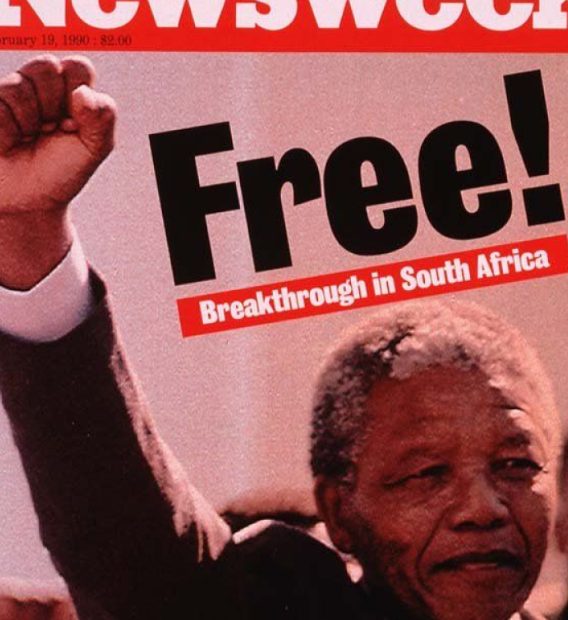
Mandela’s fight against apartheid made him a well-known prisoner. Thus, over time there were appeals from all over the globe to ‘Free Nelson Mandela’. The work of Nelson Mandela inspired all countries to begin putting pressure on South Africa to eliminate apartheid, which in turn made the anti-apartheid movement stronger than ever.
Finally, in 1990, things began to change for the better. South Africa’s president, FW de Klerk, met with Mandela and freed him. Then, in 1991, Mandela was elected President of the ANC, and he collaborated with FW de Klerk to put apartheid to an end in a peaceful manner while instituting equal rights for all. Their efforts to make South Africa a more peaceful country earned them the Nobel Peace Prize in 1993.
Nelson Mandela as the President of South Africa
Nelson Mandela’s efforts were rewarded when the ANC won the election, and he became South Africa’s first black president. As the president of South Africa, he worked to improve the living conditions and amenities of South Africa’s black population, who had suffered for decades under apartheid. He also worked hard to establish South Africa as an equitable country where people of all races and colors could coexist peacefully.
Mandela stepped down as the president of South Africa in 1999, but despite leaving politics, he remained an influential figure across the world as a symbol of peace and equality. He established the Nelson Mandela Foundation, an organization that seeks to promote the principles of equality, freedom, and peace to this day.
When did Nelson Mandela pass away?
He has been living quietly with his wife Graça since 2004. Nelson Mandela died in December 2013, at the age of 95, as a result of lung disease.
Final Thoughts
Nelson Mandela’s spirit and beliefs are still very much alive today. He created a book titled “Long Walk to Freedom,” in which people may read about his challenges in his fight against prejudice and apartheid. Nelson Mandela’s birthday, July 18, was formally designated as ‘Nelson Mandela Day’ in 2009, and every year on this day, people all around the world celebrate his legacy by giving back to their society.
Thus, it is not a stretch to say that Nelson Mandela has gone down in history as one of the greatest leaders in the fight for equality and freedom.
For more interesting content, visit the Podium School Blog.
Share with your friends
